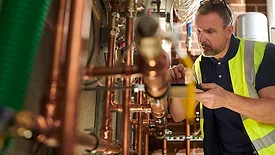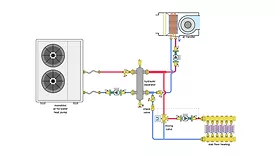Articles by John Siegenthaler, P.E.
Hydronics Workshop | John Siegenthaler
What’s the difference?
Read More
Renewable Heating Design | John Siegenthaler
Ten considerations for selling hydronic systems
July 7, 2025
Hydronics Workshop | John Siegenthaler
How to integrate a heat pump with a boiler for dual temperature hydronic heating and cooling
Delivering expectations
July 2, 2025
Hydronics Workshop | John Siegenthaler
Rethinking Heat Transfer: Why 'Natural' Isn't Always Ideal for Air-to-Water Systems
As air-to-water heat pumps replace boilers in North American hydronic systems, designers must rethink traditional approaches to heat transfer, or risk costly and inefficient installations.
June 16, 2025
Renewable Heating Design | John Siegenthaler
Transitions: Systems for simultaneous heating and cooling (Part 2)
What happens if there’s a simultaneous call for domestic water heating and cooling?
June 9, 2025
Renewable Heating Design | John Siegenthaler
Transitions: What do I do about cooling? (Part 1)
May 28, 2025
The Glitch & The Fix: May 2025
Hydronic heating glitch solved: Why adding a circulator won't fix primary loop flow issue
Cut & cap
May 8, 2025
Hydronics Workshop | John Siegenthaler
Using hydronics to leverage time-of-use electrical rates
Buying low
May 2, 2025
Renewable Heating Design | John Siegenthaler
Versatility in direct-to-load systems, part two
Going direct.
April 8, 2025
The Glitch & The Fix: April 2025
Unexpected results: heat pump system at low outdoor temperatures
Consider the “dual temperature” heat pump system shown in figure 1
April 4, 2025
Keep your content unclogged with our newsletters!
Stay in the know on the latest plumbing & piping industry trends.
JOIN TODAY!Copyright ©2025. All Rights Reserved BNP Media.
Design, CMS, Hosting & Web Development :: ePublishing











